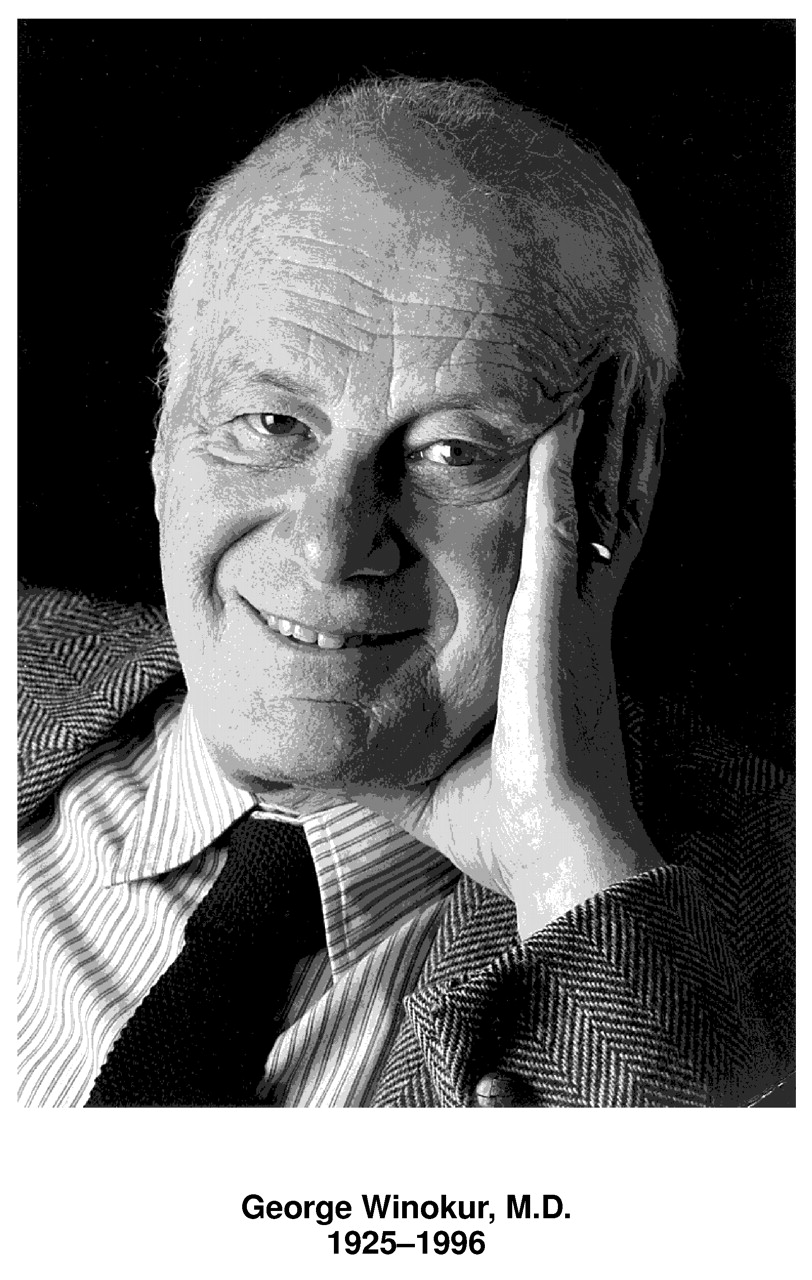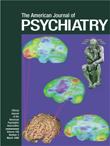For many who knew him, the lasting image of
George Winokur will be his engaging personality, his quick wit and razor-sharp intelligence, his phenomenal memory, his passion for literature and art, and his abiding love for his work, family, and friends. For the profession of psychiatry, George Winokur leaves an enduring legacy based on a lifetime of clinically informed teaching, research, and administrative work that had a major formative role in reuniting psychiatry with the mainstream of biomedical science, helping, in particular, to establish the promising new field of psychiatric genetics on a solid empirical footing.
George Winokur was born in Philadelphia on Feb. 10, 1925. After receiving his M.D. degree from the University of Maryland School of Medicine in 1947, he served on the faculty of Washington University School of Medicine for 20 years, rising to the rank of professor in 1966. In 1971, he was named the Paul W. Penningroth Professor of Psychiatry and head of the Department of Psychiatry at the University of Iowa College of Medicine, a post he filled with energy and dedication throughout his tenure. After stepping down as department chair in 1990, he remained an active and productive member of the faculty until 1995. As emeritus professor, he continued with his research activities and professional contacts up to the day of his death on Oct. 12, 1996.
Winokur’s scientific contribution derived in no small measure from his commitment to empirical investigation and his appreciation for the essential but complex and difficult methodological issues that must be addressed in order to do empirical science. Together with such luminaries as Samuel Guze and Eli Robins, he played a leading role in the development and dissemination of the Washington University criteria for “those adult psychiatric illnesses that have been sufficiently validated by precise clinical description, follow-up, and family studies to warrant their use in research as well as in clinical practice”
(1). These criteria are widely viewed as marking a paradigm shift within psychiatry from psychodynamic theory to objective, criterion-based psychiatric diagnoses that laid the foundation for replicable research by using operationally defined concepts of disease. As such, these concepts and methods were fundamentally important for the subsequent blossoming of psychiatric nosology, epidemiology, and genetics. In particular, they helped provide a prototype for psychiatric diagnostic criteria that later became institutionalized as DSM-III, DSM-III-R, and now DSM-IV.
George Winokur himself repeatedly demonstrated the power of this approach, for example, in research on affective disorders and schizophrenia. In a number of influential publications, he rigorously applied the Washington University diagnostic criteria and then used family information from interviews and medical record reviews to develop and test key hypotheses about nosology and etiology. For example, family history data were used by Winokur, Clayton, and Reich
(2) to distinguish between unipolar depression and bipolar disorder. In 1972, Winokur
(3) additionally used family history data to propose a subclassification of unipolar depression into pure depressive disease, depression spectrum disease, and sporadic depression.
Although Winokur was resolute in his strict interpretation and consistent application of diagnostic criteria, he was always happy to concede a point if research data indicated information contrary to his beliefs. When I worked with him on the Iowa 500 Study, George always said that if a person diagnosed with schizophrenia committed suicide, the diagnosis should be changed to affective disorder. He was that firm in his conviction that suicidality was associated with affective disorder. However, as part of our analysis of personal follow-up data in that study, I discovered that some of the patients whom George had himself diagnosed with schizophrenia (on the basis of a clinical record review) had later committed suicide
(4). When I presented these cases to him, George again reviewed the records and found that, indeed, the patients did meet diagnostic criteria for schizophrenia and, indeed, they had committed suicide. He graciously conceded the point and thereafter considered patients with schizophrenia, like those with affective disorders, to be exposed to a high risk for suicide.
No account of George Winokur’s scientific opus, however brief, would be complete without mention of his seminal contributions to the genetics of affective disorders and, in particular, his pioneering use of molecular biology to investigate genetic linkage of known genetic markers with putative genes for affective disorders. From his clinical work, Winokur noticed a dearth of cases in which both father and son had bipolar disorder, although other types of parent-child transmissions were relatively common. This suggested to him that the X chromosome, which cannot be passed from father to son, might be implicated in the genetics of bipolar disorder. He investigated this hypothesis in linkage studies of color blindness and blood groups, which have stimulated a great deal of theoretical interest and empirical study that have been extremely fruitful if not always confirmatory.
Many of the contributions that Winokur made as an academic psychiatrist continue to stimulate research and to provoke interest, debate, and even controversy, but it is in his rock-solid commitment to an empirically grounded psychiatry that he made his most enduring mark. He was predictably original and creative at whatever he turned his hand to, whether in research, teaching, administration, or human relationships. There will not soon be another like him.


